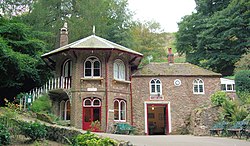**Historical Significance and Medicinal Use of Malvern Water:**
– Malvern water originates from the Malvern Hills in England and has been recognized for its beneficial properties for over 400 years.
– Figures like Charles Darwin and Dr. John Wall praised the health benefits of Malvern water.
– Notable historical events include Queen Elizabeth I publicly drinking Malvern water and Queen Victoria insisting on having it while traveling.
– The water cure treatment in Malvern gained popularity during the Victorian era, with clinics established by Drs James Manby Gully and James Wilson.
– Famous patients at Malvern included Charles Darwin’s daughter, Florence Nightingale, and Lord Tennyson.
**Commercialization and Bottling of Malvern Water:**
– Malvern water has been bottled since the reign of James I, with bottling recorded in 1622.
– Schweppes and later Coca-Cola operated bottling plants for Malvern water.
– Schweppes introduced Malvern Seltzer Water at the Great Exhibition of 1851.
– Challenges like declining market share led to the cessation of production in 2010.
– Coca-Cola had to reclassify the water as spring water due to slight impurities under EU law.
**Geological Aspects and Purity of Malvern Water:**
– Malvern water is known for its purity, approaching distilled water purity and containing very few minerals.
– The Hills are composed of hard granite and limestone rock that retain rainwater in fissures, releasing about 60 liters per minute.
– Malvern water sources are present in about 70 locations around the Hills, with major sources including Beauchamp Fountain, Enigma Fountain, and Holy Well.
– Studies on the geology, hydrogeology, and bacteriological sampling of Malvern water have been conducted.
– Malvern water generally lacks minerals, bacteria, and suspended matter, contributing to its purity.
**Interest Groups and Cultural Impact of Malvern Water:**
– Groups like The Malvern Spa Association and The Friends of Malvern Springs and Wells work to conserve and promote Malvern’s water heritage.
– Art projects like the Malvinha Fountain, Enigma water feature, and well dressing ceremonies celebrate Malvern water’s cultural significance.
– The tradition of well dressing in the Malverns continues, supported by interest groups and art projects.
– The Malvern Spa Association receives funding from various entities to conserve and promote Malvern’s water sources.
– Malvern water was promoted by famous figures and has a long-standing cultural impact, with interest groups working to preserve its heritage.
**Modern Day Presence and Controversies Surrounding Malvern Water:**
– Malvern water is still bottled and sold in various forms, including still and sparkling.
– The Malvern Spa Association and the Malvern Hills AONB Office oversee the preservation of Malvern water and the surrounding area.
– Concerns have been raised about the impact of bottling on the local environment and disputes over commercialization.
– Issues related to ownership, management of springs, and the sale and distribution of Malvern water have been debated.
– Malvern water continues to be popular for its reputed health benefits, and controversies exist regarding its commercialization and stewardship.
Malvern water is a natural spring water from the Malvern Hills on the border of the counties of Herefordshire and Worcestershire in England. The Hills consist of very hard granite and limestone rock. Fissures in the rock retain rain water, which slowly permeates through, escaping at the springs. The springs release an average of about 60 litres a minute and the flow has never been known to cease.


Beneficial properties of the water have been reported for over 400 years, and the reason for such benefits was a topic of scholarly discussion by 1817. In the 19th century Malvern became famous for the water cure, resulting in its rapid development from a village to a busy town with many large Victorian and Edwardian hotels. The writings of the hydrotherapists James Gully and James Wilson, and well known patients who included Lord Lytton contributed to Malvern's renown at that time. The water was bottled on an industrial scale under the Schweppes brand from 1850 until 2010, and has been bottled by a family-owned company since 2009 as Holywell Malvern Spring Water. In 2012 the Holywell Water Co Ltd was granted permission to use the world-famous "Malvern" name in its branding, thus becoming Holywell Malvern Spring Water. It has been drunk by several British monarchs. Elizabeth I drank it in public in the 16th century; Queen Victoria refused to travel without it.
